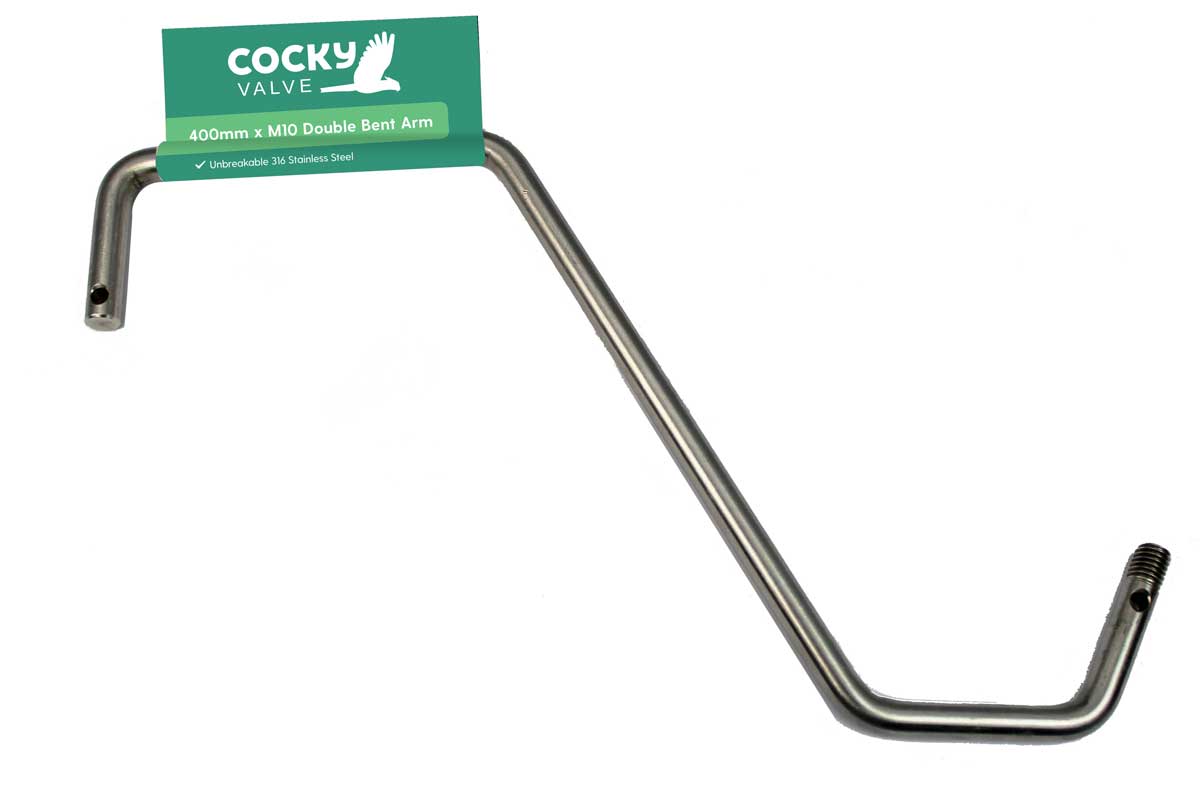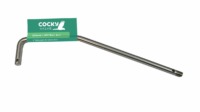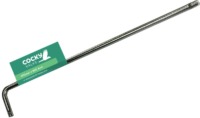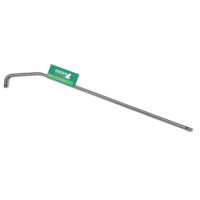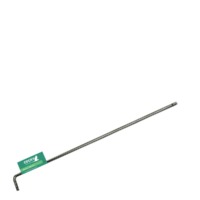FREE Shipping over $350
400mmx M10 Float Arm (double Bent)
$30.80 (incl. GST)
36 in stock
These arms were specifically designed to suit the Mid-West brand of troughs which have a very small area for the valves.
The float can be fixed directly onto the end of the arm and still fit inside the small cavity.
This can also now be achieved byway of the universal adapter which is part of the Ult Flo Float valve complete kits.
When fitted to a Ulti flo Float valve, with an 8” float mounted on the end of the arm, they will provide a shut off pressure of ≤ 900 Kpa (130 psi.)
All Cocky valve float arms are made from 10mm Ø SS316 rod making them the strongest arms on the market.
- 400mmx M10 Float Arm (Double Bent)
Space-saving design: The double bend ensures the float arm avoids obstacles and fits into tight inlet configurations.
Robust construction: SS316 stainless steel 10 mm rod gives superior resistance to bending, corrosion, and environmental wear.
High performance: Offers strong shut-off capability with common float sizes, delivering reliable performance under high pressure.
Standard compatibility: Uses standard M10 threading making it easy to integrate with Cocky Valve float adaptors and valve bodies.
Long-term reliability: Engineered to withstand demanding conditions—not just functionality but durability across time.
1. What is the purpose of a double-bent 400 mm float arm?
The double offset allows clearance around tight inlet spaces or trough lids—so the float can swing freely without hitting mounting hardware or the trough wall.
2. What material is used to make this float arm?
It’s made from SS316 stainless steel rod, diameter 10 mm, offering strength, corrosion resistance, and durability.
3. What shut-off pressure can this arm reach when used with an 8″ float?
When paired with an 8″ (200 mm) float and a suitable valve body, this 400 mm double-bent arm can achieve a shut-off around 900 kPa (≈ 130 psi).
4. In what installations is a double-bent arm most useful?
Ideal for troughs or tanks where straight or single-bend arms don’t fit—especially in enclosures with restricted space or fixtures that would obstruct a straight float arm.
These arms were specifically designed to suit the Mid-West brand of troughs which have a very small area for the valves.
The float can be fixed directly onto the end of the arm and still fit inside the small cavity.
This can also now be achieved byway of the universal adapter which is part of the Ult Flo Float valve complete kits.
When fitted to a Ulti flo Float valve, with an 8” float mounted on the end of the arm, they will provide a shut off pressure of ≤ 900 Kpa (130 psi.)
All Cocky valve float arms are made from 10mm Ø SS316 rod making them the strongest arms on the market.
- 400mmx M10 Float Arm (Double Bent)
Space-saving design: The double bend ensures the float arm avoids obstacles and fits into tight inlet configurations.
Robust construction: SS316 stainless steel 10 mm rod gives superior resistance to bending, corrosion, and environmental wear.
High performance: Offers strong shut-off capability with common float sizes, delivering reliable performance under high pressure.
Standard compatibility: Uses standard M10 threading making it easy to integrate with Cocky Valve float adaptors and valve bodies.
Long-term reliability: Engineered to withstand demanding conditions—not just functionality but durability across time.
1. What is the purpose of a double-bent 400 mm float arm?
The double offset allows clearance around tight inlet spaces or trough lids—so the float can swing freely without hitting mounting hardware or the trough wall.
2. What material is used to make this float arm?
It’s made from SS316 stainless steel rod, diameter 10 mm, offering strength, corrosion resistance, and durability.
3. What shut-off pressure can this arm reach when used with an 8″ float?
When paired with an 8″ (200 mm) float and a suitable valve body, this 400 mm double-bent arm can achieve a shut-off around 900 kPa (≈ 130 psi).
4. In what installations is a double-bent arm most useful?
Ideal for troughs or tanks where straight or single-bend arms don’t fit—especially in enclosures with restricted space or fixtures that would obstruct a straight float arm.
